
FORGOTTEN New York hasn’t featured a great deal of interior spaces. I would like to do more, but whenever I’m indoors and start pointing a camera, someone wearing a badge, or someone without one, gives me the “Can I help you sir?” treatment, which in New York City can be interpreted as “GTFO” which I won’t spell out, this being a family website and all. However, for several years I’ve had a collection of photos taken in Queens that were taken in the most part for road building projects, and many depict buildings that were targeted for demolition. I employed a couple hundred of them to co-write Forgotten Queens with the Greater Astoria Historical Society, a book that will celebrate its 10th anniversary later this year (getting one book published is one thing, but two puts you on the scoreboard). I have recently posted a few of these on my personal Facebook page, and didn’t suspect I would use them on the website, but I have used webmaster’s prerogative and changed my mind. See if you think it was the right decision.
Maspeth
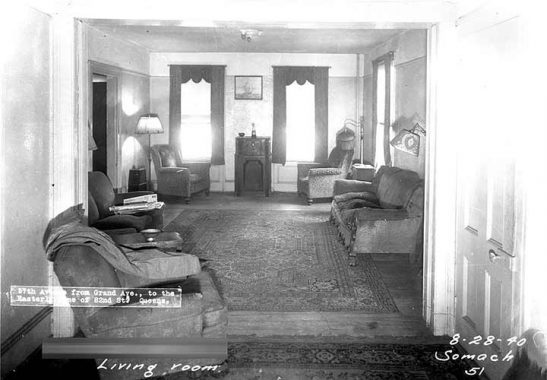
This is a typical living room in 1940, positioned at the front of the building as the sun pours in. The radio is the centerpiece in these pre-TV days, with 4 chairs, a couch, rug and three lamps. The house was located on 57th Avenue somewhere between Grand Avenue and 82nd Street, and I am perplexed why this location was chosen for a photograph.57th Avenue parallels the Long Island (Queens-Midtown) Expressway but that leg of the road was not built until the 50s. Perhaps, since the Queens Midtown Tunnel, opened November 15, 1940, was under construction, a road connecting it to Horace Harding Boulevard where it began at Queens Boulevard was in the planning stage already.
Most photos seen here were by Somach Photo Service.
East Elmhurst
Here’s an unnamed grocery at 97-05 Ditmars Boulevard in East Elmhurst, just south of today’s Grand Central Parkway and LaGuardia Airport; the photo was likely taken in advance of the GCP construction. As you can see the roads in East Elmhurst were still unpaved.
However, this is a thoroughly modern grocery in the late 1930s and there are refrigerated and frozen cases. A number of familiar brands are evidenced such as Pepsi-Cola, Ruppert Beer (sold to Rheingold and went out of business in 1965), Quaker Oats and Chase & Sanborn Coffee (which had a somewhat infamous ad campaign in the 1950s).
If you’re looking for the building, you won’t find it as all this is now part of Overlook Park, which I have to admit, I have never visited.
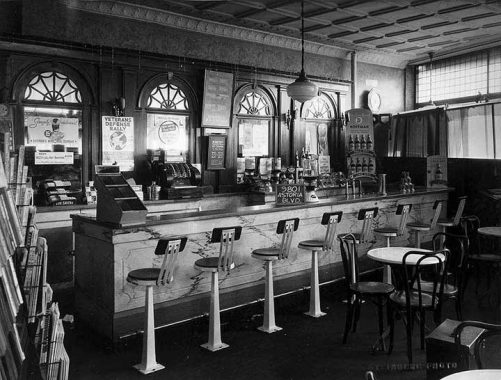
Also in East Elmhurst at 98-01 Astoria Boulevard. Like many drugstores in the era, you could get an ice cream soda and peruse the magazine rack while waiting for a prescription. While the building still stands in East Elmhurst, it now hosts a dry cleaners.
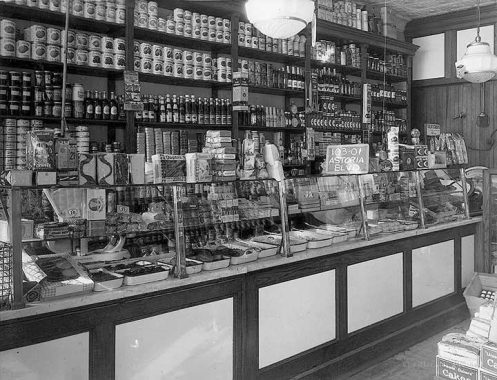
Delicatessen at 103-01 Astoria Boulevard, Baked goods are top the counter, lunch choices in the case, and canned goods and condiments stacked up on wall shelves. This location on the corner of Humphreys Street is now Dosanjh Deli Grocery.
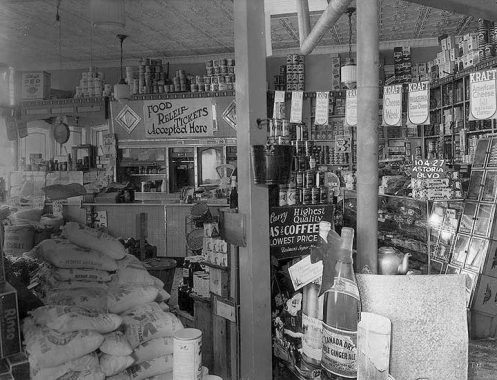
Familiar brands like Canada Dry and Kraft are represented at another nearby grocery at 104-27 Astoria Boulevard.The “food relief ticket” on the misspelled sign is likely similar to today’s Supplemental Nutrition Assistance Program (SNAP). The Depression actually worsened beginning in 1936 and would not completely resolve until the uSA entered WWII in 1941.
The store was located between Humphries and Gilmore Streets.
In 1932, Fagnan’s Hardware, 98-07 Astoria Boulevard, was chockablock with ad signage for Woolsey paints and varnish, Mazda lamps and Yale locks and keys, and the window display was filled with lamps, teakettles, doorknobs, wrenches and other housewares. Hardware stores of yesteryear were not as organized as big box stores of today, but they specialized in personal service.
Rex Meat Market was located in the vicinity of Ditmars Boulevard and 23rd Avenue (formerly called Mansfield Avenue). Currently that intersection is a traffic circle and a major crossing of the Grand Central Parkway into LaGuardia Airport.
I don’t usually buy meat by brand, unless it’s a supermarket brand, but Swift & Co. is still a major meatpacker in the USA. It was founded in 1855 by 16-year-old Gustavus Franklin Swift in Eastham, MA. In 2007, JBS purchased Swift for $1.5 B. An actor portraying Gustavus Swift is currently in the brand’s advertising.
Sunnyside
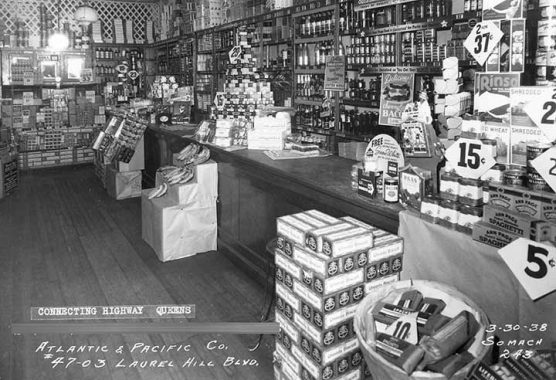
Laurel Hill Boulevard, now a service road of the Brooklyn-Queens Expressway, used to be a major shopping strip in southern Sunnyside. Here’s the insides of an A&P branch located at 47-03 LHB, since demolished for what was once known as the “Connecting Highway” but is now the BQE.
The Atlantic & Pacific Tea Company operated storefronts, but more recently, supermarkets, from 1859 all the way to its bankruptcy in 2015. It had an especially strong presence in NYC and I was perplexed about why it failed.
Another of the Lost Bars of Queens, Bill’s Tavern, 45-02 Laurel Hill Boulevard, in 1938. A couple of years later it would be torn down for the Connecting Highway, today’s BQE.
I’d like to know what happens to all these classic wooden bars when the taverns they are in go out of business. Should there be an American Bar Museum?
Woodside
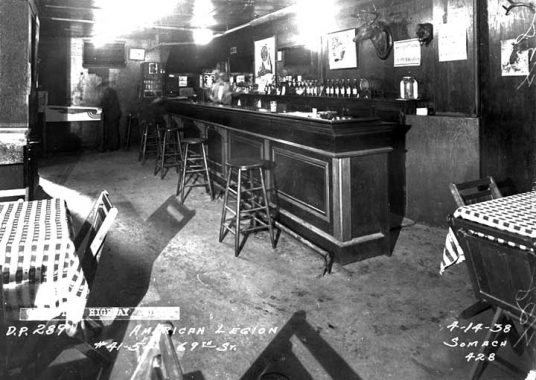
The American Legion, a service organization for retired American military veterans, comprises state, U.S. territory, and overseas departments, in turn, made up of local posts was founded in 1919 after World War I in Paris and is now headquartered in Indianapolis. There are several posts in NYC, with this one located at 41-54 69th Street. This location is now completely occupied by the Brooklyn-Queens Expressway.
69th Street was formerly known as Fisk Avenue and was named for a local casketmaker.
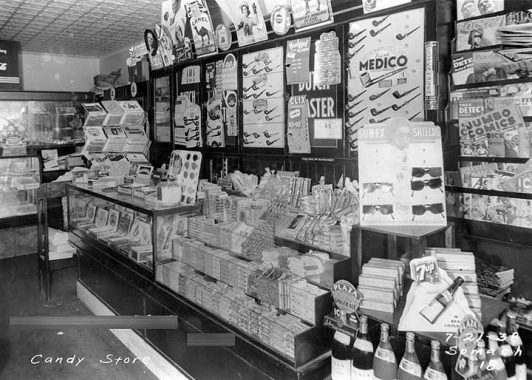
The location of this candy store was unlabeled by Somach. Much more than candy was available as at today’s candy stores, like cigars, sunglasses and smoking pipes including the Medico brand, which was manufactured locally at the William DeMuth Pipe Factory in Woodhaven (now condominiums).
Broad Channel
Barbershops were the places where men gathered to chew the fat and offered men a chance to bond and discuss the latest news and sports as well as debate contemporary issues. The man in the chair at Phil’s on 810 Cross Bay Boulevard is waiting patiently for the barber to finish his shave.
Next door to Phil’s was Augustus H. Coberg Hardware, Paints and Housewares. Store proprietors in this era were much more likely to put their names on their business and take responsibility for quality in a more obvious manner.
Broad Channel has a different street numbering scheme than mainland Queens, as east-west streets are numbered roads east and west of Cross Bay Boulevard; this, #810 was a bit south of East 8th Road.
O’Neils in Broad Channel in 1940, #818 Cross Bay Boulevard at East 9th Road. Simple decor, with wooden chairs and tables, checkered tablecloths and a pot belly stove. They were called bars and grills for a reason, as you see the grill in the rear of the shot, complete with pots and skillets on the wall.
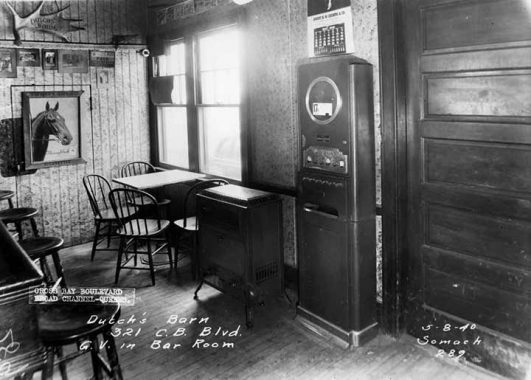
At Dutch’s Barn on #321 Cross Bay Boulevard, smoking indoors was no big deal in that era and a cigarette vending machine had a prominent place. On the wall is an ad for Twenty Grand Cigarettes, named for a champion race horse who won two legs of the Triple Crown in 1931. He was still alive in 1940.
Laurelton
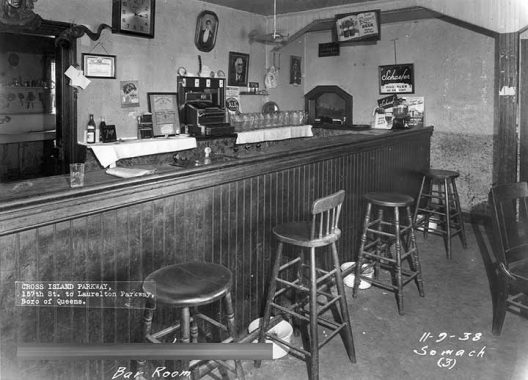
I’m unsure from the label where Frank’s Bar was, but it was somewhere along today’s Laurelton Parkway, which was on planning boards in 1938.
Flushing
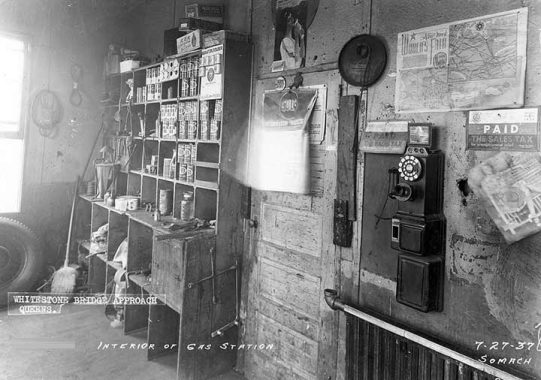
A typical gas station interior in July 1937. I am again not certain where this was, but it is in a batch of photos taken on Willets Point Boulevard in today’s Iron Triangle area east of Citifield. Surveyors were then planning the Whitestone Bridge and its approaches; the bridge would open April 29, 1939, a propitious year.
Though WWII was under way in Europe, there was a general positivity under way in the US and in New York. Note the World’s Fair map at top left. It would be a good 21 months before the Fair opened in Flushing Meadows, but it was already being heavily promoted.
This gas station would seem to be quite a fire hazard as all the shelving was wood.
A rather desolate scene at the Flushing River as what Somach is calling the Westerly Building has been tabbed for demolition. It appears to be a grand old French Second Empire building possibly constructed as a hotel or lodging. Its sitting room was still intact.
We see looking east on Northern Boulevard toward the Flushing River Bridge, which has had a number of editions over the years. Throw in the abandoned Shell station, and you’ve got a tableau of dismay.
Woodhaven
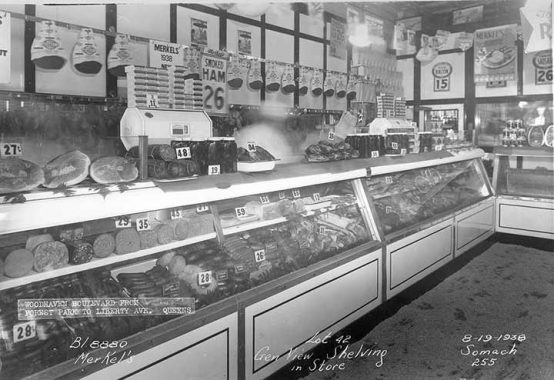
An interior of Merkel’s, a meat market on Woodhaven Boulevard somewhere between Forest Park and Liberty Avenue. Meat prices are considerably higher than in 1938.

W. T. Grant was a major general stores chain, competing with Woolworths and Kresge’s (K-Mart) in business from 1906 to 1976. Founded by William Thomas Grant, it was known as simply “Grant’s” on its advertising in its latter years. I don’t recall a Grant’s in Brooklyn, but it must have been represented there as the chain had 1200 stores at its maximum. Grant died at age 96 in 1972, only 4 months before his company went bankrupt.
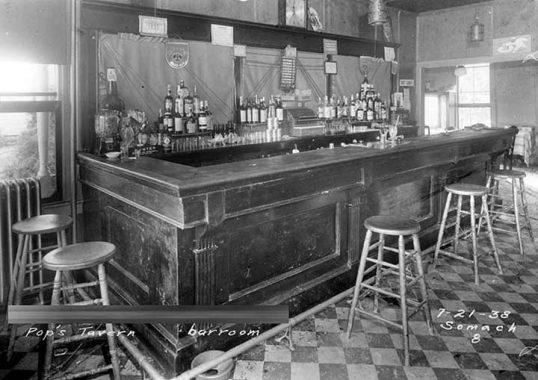
I am unsure of the exact location of Pop’s Tavern in Woodhaven, but if it’s the still-existing Popp’s, this photo is quite the find. From an earlier FNY page about Popp’s:
Popp’s Cafe was originally a German men’s club that became a tavern and then an ice cream parlor after Prohibition. The last owner in the original Popp family, Ralph Popp, sold what was then a full-menu diner-style restaurant in the 1970s. The place at Jamaica Avenue and 86th Street has changed hands since then and somewhere along the way, it dropped one of the p’s and turned into Pop’s.
Rockaways
Mata’s, an Asian-themed sandwich shop, was located on the Rockaway boardwalk at Ocean Avenue. It should be easy to pinpoint that location but in the 1930s there were a number of Ocean Avenues scatted in the peninsula. It sold shrimp and lo mein sandwiches, and I can get my head around neither concept. A noodle sandwich?
As always, “comment…as you see fit.” I earn a small payment when you click on any ad on the site.
8/6/23

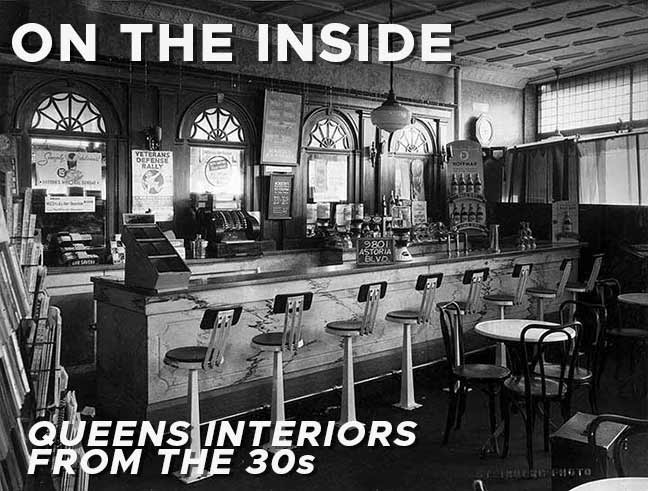
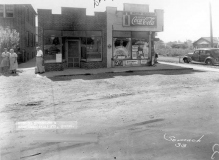
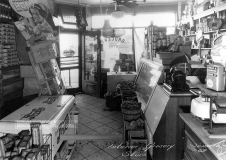
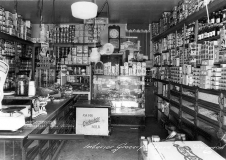
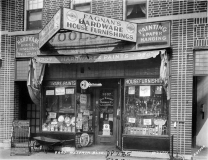
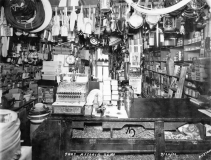
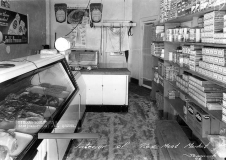
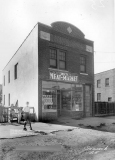
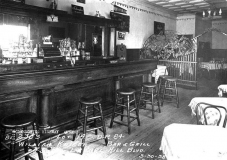
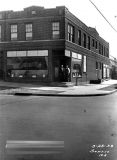
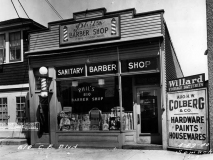
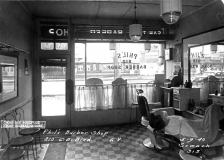
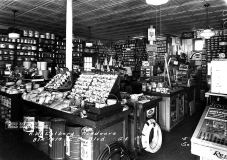
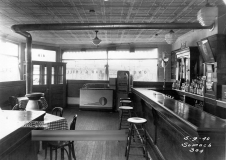
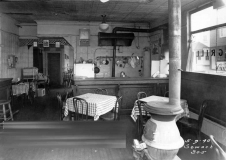
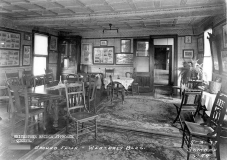
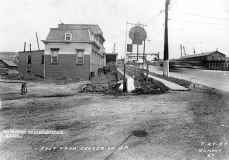
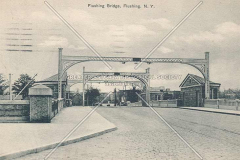
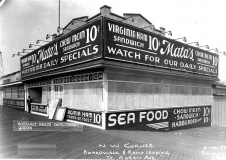
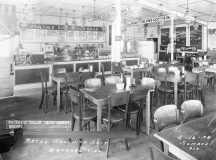
23 comments
Kevin,
The photos for Mata’s at the end of your post are the ones of Fagnan’s Hardware appearing above and not of Mata’s.
Fixed thx
The Half Moon bar on Bowery was positively ancient but you didnt want to drink
out of any of their glasses,best just to order a can or bottle.Schaeffer was 40 cents
a glass anyway.The place made CBGBs look like a Baskin Robbins
Another wonderful read. Bravo!
Good article,enjoyed a lot
Thanks for posting this collection. I am not a resident of NYC but a visitor and fan. I could hear speeches from Damon Runyon in every photo.
In many cases, when an old bar closes, the original bar and carved woodwork would be removed intact and sold. The bars would have brass plaques attached to indicate the manufacturer which makes them valuable. There was a bar in Greenpoint called The Landmark, on the SE corner of Norman Ave. & Diamond St. The old bar and woodwork ended up in a bar in Hoboken, NJ.
Grant’s went bust because of their willingness to give credit to anyone, even chronic deadbeats,
Know someone who worked in one of their stores and they took back ANYTHING on returns, even to the point of being rediculous
Kevin, this is great, and would be a wonderful kick-off to a series on interior spaces.
A few comments:
1. When the Queens Midtown Tunnel opened, the approach road was the Queens Midtown Expressway, and it went at least as far as Greenpoint Avenue. There is good reason to suspect that it was planned to go further east, but that those plans were disrupted by WW II.
2. My father, who grew up in Sunnyside in the 1930’s always spoke of the vibrant shopping along Laurel Hill Boulevard. He often walked to it from his house on 47th Street. He remembered walking to St. Raphael’s on Greenpoint Avenue and the roads were still dirt.
3. The American Legion is struggling to remain afloat. Many posts in New York City and Long Island have closed and many others are in danger.
4. Merkel’s was a small chain. We had one on 150th Street in Whitestone when I was a kid. They went bust when it was discovered that they were selling horse meat(not a good move).
I remember the scandal at Merkels, supposedly had something to do with mob infiltration, via bad loans
My paternal grandparents lived on 53rd Avenue in Maspeth, not far from the home on 57th, that is depicted above. Their living room was VERY similar! I remember
visiting as a young lad in the 1960’s- Grandma’s green velour sofa was covered in clear plastic slipcovers, and one wall in the room was completely mirrored! But the place always had a wonderful aroma of fresh kielbasa, and perogies being fried in butter and onions- I suppose that since we visited for Easter (Pascha) every year, explains why my most vivid memories are such! 😉
Where can someone buy fresh kielbasa these days?
Well, I can’t speak about Queens, because I’ve lived most of my life out on the Island. If you’re headed east, I can recommend Kabanos in Copiague and the Polka Deli in Riverhead for authentic smoked and fresh kielbasa…
The living room in the Maspeth section brought me back to my childhood in the early 1950’s/60’s of my grandmother’s living room, 1st in her apartment on Greene Ave. in Bushwick and then her apartment on Elliot Ave. in Middle Village, both ‘railroad’ apartments. I have great family memories of those 2 places.
Regarding the living room photo, our apartment on Utica Av. had the living room in the front with the kitchen off to the left (maybe the kitchen in the photo shown was also off to the left). We had a radio console similar what is in the photo (unknown vintage), as well as an RCA TV, vintage 1952.
Check out Platz Hardware on the northeast corner of Forest and Gates Avenues in Ridgewood.
It’s been there since 1909, some say 1906.
There are some interior photos floating around but I cannot find them on-line.
Here is an old exterior shot:
https://s3-media0.fl.yelpcdn.com/bphoto/WlKWukIxthm4VIaeU9xpbg/o.jpg
Maspeth apartment: very similar to places we lived in on Etna Street, Autumn Avenue, and Hemlock Street in Cypress Hills. There must have been thousands of apartments like that. We had a finicky Magnavox TV though. I definitely recall a Merkel’s store but I can’t place where it was.
I love seeing these old photos! While I’m not sure I want to give up my Shop-Rite or my Wegman’s, I wish I could go back to some of these gems. When I lived in Queens at the very end of the 20th Century, there were a few ‘sole proprietor’ or ‘Mom & Pop’ holdouts here and there, but they were few and far between. Thanks for posting these!
If anyone has Vincent F. Seyfried’s book, “OLD QUEENS, N.Y. in Early Photographs”, a 1910 photo of the interior of the Platz hardware store can be seen. It is plate #166 on page113.
Here is the link. Beware, it takes about a minute to load.
http://vital.queenslibrary.org/vital/access/services/Download/aql:25348/SOURCE1?view=true
Many are from the Forgotten NY affiliate – the Greater Astoria Historical Society’s collection.
In the photo of the American Legion hall it appears that the gentleman in the background is standing over a pinball machine. Mayor LaGuardia went on a purge against those and slot machines as they were both considered forms of “gambling”. He famously smashed a bunch of them up with an axe and dumped them in NY harbor after a raid. I guess as a fellow WWI vet he decided to overlook the Legion hall!
That Flushing gas station interior could be right out of Gatsby. The valley of ashes gas station that is.